How to clinically manage catheter-related right atrial thrombosis?

“Catheter-related right atrial thrombosis is an underestimated, severe, and life-threatening complication of any type of central venous catheters” Rossi et al (2020).
How to develop a nurse-led ultrasound-guided peripheral intravenous service

“Overall, the program effectively demonstrated a decrease in the number of attempts required to insert a peripheral venous catheter in patients with difficult venous access” Stuckey and Curtis (2019).
Surveillance of bloodstream infections in intensive care units in England

“While the overall rates of ICU-associated CVC-BSIs were lower than 2.5/1,000 ICU-CVC-days across all age-ranges, large differences were observed between units, highlighting the importance of a national standardised surveillance system to identify opportunities for improvement” Gerver et al (2020).
Risk analysis of factors associated with catheter-related thrombosis

“Recognizing the risk factors for catheter-related thrombosis is extremely important to inform the development of catheter care guidelines” Zhou et al (2020).
Review of neonatal placental blood sampling

“Blood sparing policies endorsed umbilical cord blood (here called placental) as an alternative source for laboratory testing. Little is known on the suitability of placental blood to evaluate neonatal hemostasis of newborn infants” Raffaeli et al (2020).
Clinical guide to preoperative considerations for Jehovah’s Witness patient

“Anticipating the challenges associated with managing and optimizing patients who refuse blood products allows for more favorable outcomes in the preoperative period” Chae et al (2020).
Why transfusion demand increasing but supply of blood decreasing – Full Text
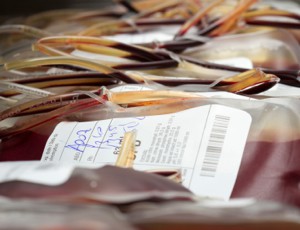
“This analysis on articles that presented time series relating to blood donations and blood component transfusion showed that aging of the population was the main factor associated with the increasing demand for blood and the decreasing supply of blood” Oliveira and Reis (2020).
Management of vascular access complications in home parenteral nutrition

“This paper looks at other venous access complications, including blocked and damaged catheters, catheter related thrombosis and CRBSI” Leiberman et al (2020).
What is the replacement interval for insulin infusion sets?

“In this study, 7 days indwelling time of insulin infusion sets did not show a clinically relevant impact on glycemic control or insulin requirements and the infectious risk appeared to be low” Waldenmaier et al (2020).
Ultrasound-guided venipuncture in the grey nurse shark – Full Text

“The paired LAV produced representative blood samples and could also be used for fluid therapy and/or intravenous anaesthesia as has been done in other sharks” Otway (2020).
What is the impact of technology on pediatric ICU prescribing errors

“The replacement of weight-based infusions with SCIs was associated with significant reductions in infusion prescribing errors” Howlett et al (2020).
Multimodal intervention aimed at influencing peripheral IV insertion practices

“In 2013, an MMI conducted in an Australian metropolitan ED used clinician champions, guidelines, education sessions and promotional materials to encourage a reduction in unused and inappropriate peripheral intravenous cannulas” Lim et al (2020).
Long-term complications of PICC positioned by ECG technique

“The intra-procedural tip location by IC-ECG is more safe and accurate than the traditional method of verifying tip location only post-procedurally, by chest X-ray” Yin et al (2020).
Protocol for reducing blood culture contamination in an intensive care unit
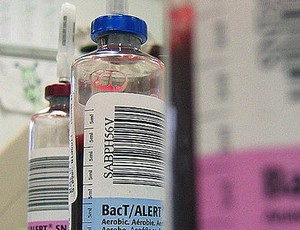
“Blood culture contamination (BCC) is a safety and quality indicator for intensive care units (ICUs). BCC rates in our ICU ranged from 2.90% to 6.70% in 2017” He et al (2020).
Evaluation of safety and pain associated with new bloodletting device – Full Text

“In this study, we will investigate pain of bloodletting device during blood collection and will identify the safety of the device” Ryu and Kang (2020).
Review of preanalytical blood sampling errors – Full Text

“The study confirms the relative frequency of preanalytical phase error occurring inside and outside of the laboratory” Sonmez et al (2020).
Review of inappropriate use of intravenous catheters in medical and surgical wards – Full Text

“Inappropriate use of catheters is more common in medical wards compared to surgical wards” Laan et al (2020).
Is intravenous push administration of beta-lactams safe?

“The use of IVP as an alternative to intravenous piggyback (IVPB) during times of drug shortage for select beta-lactam antibiotics appears to be safe, and ADE are similar to those previously described for IVPB administration” Marsh et al (2020).
What is the impact of clothing on epinephrine administration with auto-injector

“To study whether injection through clothing influences the frequency of subcutaneous and intraosseous/periosteal deposition of epinephrine” Dreborg et al (2020).
Blood transfusion safety and technological innovations review

“This review will examine these issues along with newer blood safety technological innovations and further highlight contributing studies from our institutions” Friedman et al (2020).
Nursing attitude towards resiting peripheral IV catheters – Full Text
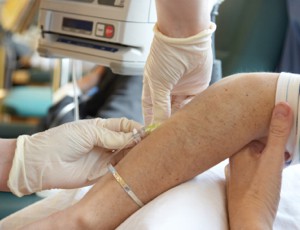
“Based on the survey results, a formal recommendation was made within the hospital system to amend the existing policy and remove the requirement for SPC resiting after 96 hours in favor of the nurses’ best clinical judgment” Evers et al (2020).
Impact of alarm fatigue on infusion pump contamination

“In this study, we report hand hygiene compliance and infusion pump contamination in the context of infusion pump alarm prevalence” Nas et al (2020).
Stability of ceftolozane-tazobactam in an elastomeric infusion pump – Full Text

“Ceftolozane-tazobactam is suitable for ambulatory care delivered as a continuous infusion via an elastomeric infusion device” Raby et al (2020).
IV to oral antibiotic switch for people who inject drugs
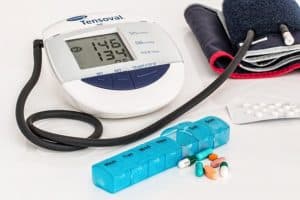
“Our single center study suggests access to oral antibiotic therapy for PWID who cannot complete prolonged inpatient IV antibiotic courses is beneficial” Durkin (2020).
How effective is subcutaneous lidocaine for cancer-related pain?

“This randomized, double-blind, placebo controlled, 2 × 2 crossover trial evaluated the effectiveness, safety, toxicity, and impact on quality of life of a limited duration subcutaneous lidocaine infusion (SCLI) for chronic cancer pain” Hawley et al (2020).
Smiths Medical announces acquisition of Access Scientific including the POWERWAND™ product range
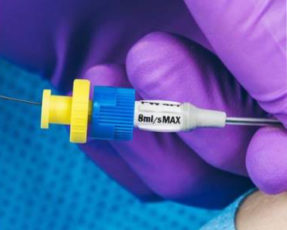
“The POWERWAND™ range of products are clinically differentiated vascular access solutions, supported by nine (9) peer-reviewed papers and nine (9) scientific posters” Smiths Medical (2020).
Applying Functional Resonance Analysis Method (FRAM) to intravenous infusion practices

“We apply FRAM (Functional Resonance Analysis Method) to intravenous infusion practices in an intensive care unit (ICU) to explore how tensions and contradictions are managed by people” Furniss et al (2020).
Intraosseous access result in secondary septic shock – Full Text

“Magnetic resonance imaging (MRI) created more confusion by showing septic arthritis with proximal humeral osteomyelitis and gas formation. MRI suggested that it might be the sequelae of an intraosseous line insertion” Khan et al (2020).
Intravenous or subcutaneous route in palliative care – Full Text

“This article tries to highlight the dangers a neglected IV line poses to limb and life and tries to stress on the importance of a subcutaneous route for pain medication administration in terminally ill palliative patients” Sahay and Kumar (2020).
Harmonizing antibiotic regimens with renal replacement therapy

“Clinicians should dose antibiotics to match renal replacement therapy drug clearance characteristics to antibiotic pharmacodynamic profiles” Jang et al (2020).

